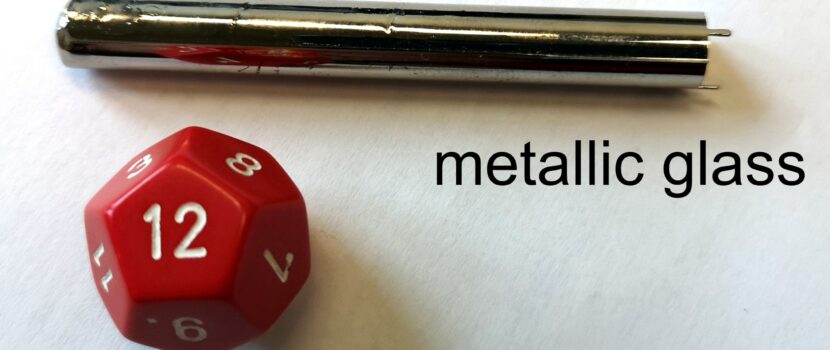
Extending the glass-forming range of metallic glasses
Metallic glasses (predominantly composed of metals, therefore, also known as amorphous metals), represent possibly an unexpected class of glasses, which can be applied, for example, as bio-compatible materials (implants, surgical tools…), in biosensing, hydrogen storage, or as micro-electromechanical systems (MEMS), etc. It is generally known that glasses are best formed when the high-temperature liquid is cooled fast enough to avoid crystallization on quenching. The range of cooling rates at which metallic glasses have to be cooled is wide; for some glasses, a cooling rate as high as million degree Celsius per second is required, while for some metallic glasses very slow cooling is sufficient. The temperature from which the liquid is cooled lies above the so-called liquidus temperature, i.e., a temperature above which no crystals can thermodynamically co-exist with the liquid anymore. Recent joint work between the Faculty of Environment and the Institute of Physics, Beijing, shows that the glass-forming ability of some metallic glasses can be extended by cleverly designing the cooling protocol. The study used an ultrafast-heating/cooling calorimetry to access cooling rates as high as ten thousand degrees Celsius per second. Unlike the general concept of making glasses as noted above, the study revealed that upon cooling an ytterbium-based metallic glass from the high-temperature liquid, metal-rich precipitates form and deteriorate the glass-forming ability of the studied glass. The study introduced a new method of so-called “up-quenching”. While the liquid is cooled, an up-quenching step, re-heating from a specific temperature which lies in a temperature range between the melting point and the liquidus temperature, is introduced. In such a way, the precipitates are dissolved, and metallic glass can be obtained. The up-quenching protocol provides a new strategy to develop bulk metallic glasses of other compositions giving new materials and properties.
Q. Cheng, P. F. Wang, H. Y. Jiang, L. Gu, J. Orava, Y. H. Sun, H. Y. Bai, and W. H. Wang, Effect of high-temperature up-quenching on stabilizing off-eutectic metallic glasses. Phys. Rev. B 103 (2021) L100302.
A link to the article: https://journals.aps.org/prb/abstract/10.1103/PhysRevB.103.L100203
